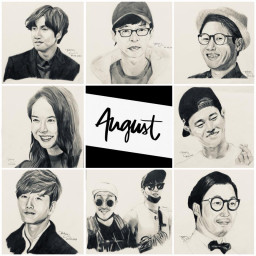V. Insert a suitable word in each of the blanks to complete the following passage.Because the pencil (46)______become such a fundamental (47)______ of our lives, it's difficult to remember that people have not been using them forever. (48) ______other products of human ingenuity, pencils had to be (49)______ . Before the first half of the sixteenth century, peopie (50)______to use pens to write with and brushes to paint with. It was also (51)_______to use a mental stick to make faint marks on paper. However, up to the point no one has found an easy way to make marks (52)______could be erased. Then, some time before 1565, a large (53 )______ of the chemical, graphite, was found near Borrowdale in Cumbria, England. The locals would (54)______this graphite (a kind of soft black rock) to mark sheep. Soon, tales of this unusual soft substance had spread to (55)______aroundthe world, who were eager to use it to produce works of art. (56)______is soft and dirty, and in (57)_______ to write or draw with it, it used to have to be covered (58)_______something, such a£ sheepskin or string. People has been trying to improve the pencil for some time before manufacturers in Italy came up (59) ______the idea of enclosing the graphite in a wooden case. The modern pencil was (60)_______.VI. Read the following passage and choose the correct answer for each question.I waded through the ankle-deep water. I did what the children were doing: smiling, laughing, splash about. No one knows how different I was. The island, which was the paradise for those who had been living there all their lives, was not known to many. This made it an ideal location for the new incinerator.My father was divulged the secret to me after his company had confirmed theplans to build the incinerator. He wanted me to see the place before it was ruined so that I would be able to keep its memory alive.There was a row of decrepit houses a short distance from the shore. The houses were small and they stood in stiles. There were holes in the roofs and the walls were cracking. Women were cooking in a small common kitchen at the end of the row. Several men were at a vegetable plot. Chickens, cows, and goats roamed' about, their movements restricted by the sea.I have never seen people so trusting and a place so peaceful and carefree.Although I was stranger, no one bothered to ask who I was. I was invited to lunch. There was nothing to link the desperate environment of the island and the city. I pitied these people who would evacuate their homes.61. What did the writer do to get on well with the other children?A. She swam together with the children.B. She did the same things that they were doing in the water,C. She played some traditional games with the childrenD. She pretended to be a local person.62. Why is the writer “different" from tlte other children?A. His father did not live but worked in the island.B. She did not live in the island.C. She and his father travelled to the island.D. She did not know the children's games.63. The word “paradise” in paragraph 1 has the same meaning as______ .A. ground B. heaven c. sky D. land64. Why the island is ideal location for the new incinerator?A. Because no one knew about the island.B. Because the people in the island did not know the new incinerator,C. Because the island is not popular.D. Because the people in the island consider it as paradise.65. The word “divulged” in paragraph 2 has the same meaning as______ .A. refused B. revealed C. maintained D. changed66. Why did the writer's father ask her to see the island before it was ruined?A. He wanted her to keep pictures of the people in the island.B. He wanted her to see how the island changed.C. He wanted her to keep images of the island before it was damaged.D. He wanted to teach her love the nature.67. Who took care of the crops?A. The children B. The women C. The men D. All of them68. Which parts of the island have animals?A. Near the sea B. In animal cagesC. All over the island D. In the people’s houses
69. Why did the writer find the people in the island trusting?
A. The children played cheerfully with her.B. The people did not care where she came from,C. The people lived in a peaceful environment.D. They invited her to lunch without knowing her.70. Why did the writer pity the people?A. Their houses were damaged.B. They had to live in poor conditions,C. They had to move to the city.D. They have no place to live.VII. Use the correct form of the words given in the brackets to complete the following sentences.71. We think of ourselves as living in a time of (CONTINUE)________technological change and development.72. The weather is so (CHANGE)________that I do not know what to wear.73. New Zealand had three major (INTERNATION)_________airports: Auckland, Willington and Christchurch.74. The teachers gave students wrong test papers, which caused a lot of. (CONFUSE)75. Einstein’s (BRILLIANT) _______ was unnoticed at school.76. The flats were built in the 1980s, but they were all (MODERN)________ in the 1990s.77. i feel much better since I decided to stop eating (PROCESS) _______ food.78. Duong showed a lot of (MATURE)________in the way she handled the problem with Chau.79. It is difficult to (ARRANGE)________ a day which is convenient for everyone.80. We should rely more on (NEW) _________ source of energy.











